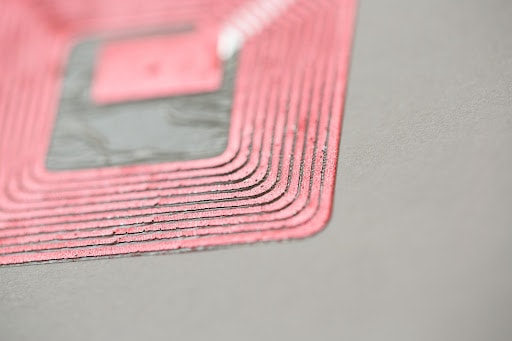Protecting your shipments is vital to the continued health of your organization. Getting packages to their destinations intact and in good shape delights customers while reinforcing the high-quality work and professionalism for which your company is known. To that end, selecting a high quality RFID tag as a means of tracking potential damage to shipments is key to maintaining the integrity of your cargo. RFID stands for radio frequency identification and it works on a very basic principle: radio waves. It’s a wireless system that can be useful for many unique applications. In this article, we provide a quick guide on how to find the quality RFID tag for your business needs.
Operating Frequency
Since RFID operates in radio waves, that means tags are going to have their own operating frequencies. Operating frequencies inform how a device can track its tags. Passive tags predominantly use 125 KHz, 134 KHz (low-frequency), 13.56 MHz (high-frequency) and 860 to 956 MHz (ultrahigh-frequency). Active tags, on the other hand, use 433 MHz, 2.45 GHz, and 5.6 GHz (but only occasionally). Different frequencies are optimal for different purposes. Some are ideal for tracking, While others are better suited to payment systems or check-in/checkouts. It ultimately depends on how you want to use the tag to know which frequency is best.
Passive or Active
RFID tags can be passive, semi-passive, or active. This merely means that they may or may not require a power source to function. An active RFID tag is one that requires a battery (or external power source) to function. They are ideal for real-time tracking or creating a beacon-like tracking situation. They also have an incredible range. Passive tags use electromagnetic waves to get the signal.These tags await a signal from the reader before they can kick in. The antenna picks up the waves and concerts to radio frequency so the tag can send readable information to the RFID reader. A semi-passive tag runs the chip with a battery, but transmits information in the same manner as a passive tag.
Compliance Standards
Whenever folks talk about shipping and tracking, they rarely bring up one of the most crucial aspects of the process: compliance standards. Every industry has a measure of compliance standards by which they must operate. Shipping cargo and tracking it is no exception. Standards ensure integrity and high quality for every device, and are often specific to how devices are being used. RFID also has its own standards. All RFID devices fall under one EPC UHF Gen2v2 or ISO/IEC 18000-63, both of which govern RFID and related devices.
Usage
Although RFID tags and RFID technology are used in a number of applications, the most common are probably library check-outs and cargo asset tracking. Some tags can search, track, and communicate with each other.
Passive tags have a lot to offer as well, with applications as diverse as improving hospital safety with RFID tracking stickers at parking lot gates to let authorized drivers enter by simply scanning the tag. They’re perhaps best suited to tracking impacts on cargo throughout the supply chain. Logistics companies can use them to gauge, understand, and eventually design prevention methods against impacts that occur along the chain.
For the best in RFID tags and asset tracking, industry leaders Spotsee have a multi-purpose solution that’s easy to understand and even easier to use! Simply place the RFID tag in or on your cargo and arm it in the field. If something impacts or damages your cargo, the tag will pick it up and turn red. These tags are tamper proof and readable remotely, so you know you’re using an exceptional, robust tracking device. Check out the wide variety of RFID tag options at https://spotsee.io/rfid for more information.
Construction
The final consideration for selecting some RFID tags is assessing their construction. Since these tags are essentially labels that contain an RFID chip, an antenna, and a substrate. Here’s what each component does:
RFID chip – this is an integrated circuit that works similar to other types of circuits. It can store data, and is essentially a small scale microprocessor.
Antenna – the antenna receives the signal. The antenna functions as a two-way communication conduit and will either transmit or reflect signals based on the type of tag.
Substrate – the material on which the tag and its components are built or printed.
Power source – only active and semi-passive tags use a power source, which is typically a battery of some kind.
Tags can be constructed as inlays, smart chip type circuits, and even be built into something else entirely. They are designed to be long lasting and put up with plenty of use, making them a great way to track cargo.




